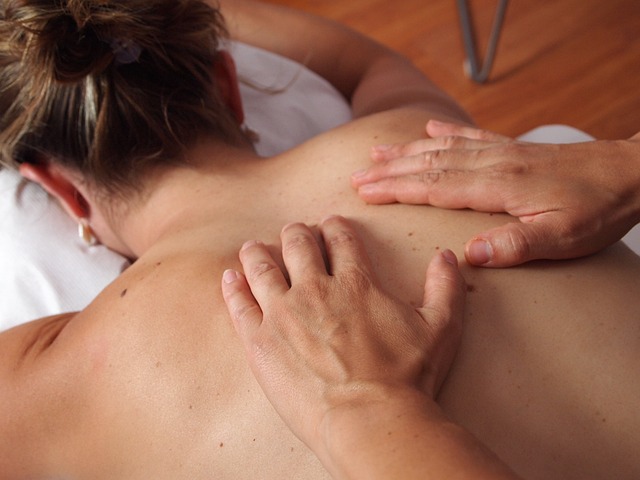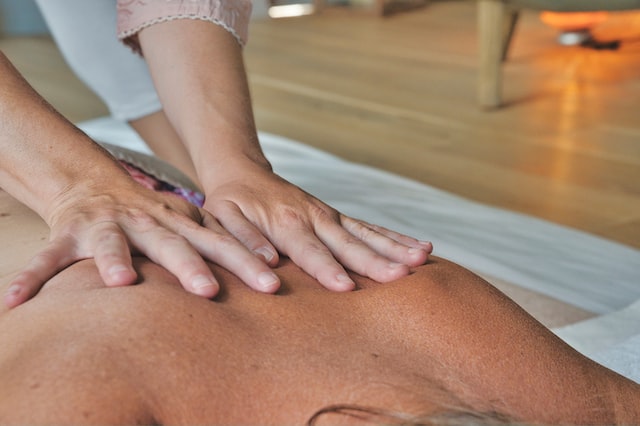If you’ve ever had a sore muscle or felt tension in your body, you might have considered getting a deep tissue massage. This massage technique is designed to work on the deeper layers of muscle and connective tissue, helping to alleviate pain and tension. In this article, we’ll explore the benefits of deep tissue massage and discuss the techniques that massage therapists use to perform this type of massage.
What is Deep Tissue Massage?
Deep tissue massage is a type of massage therapy that uses slow, deep pressure to release tension in the muscles and connective tissue. This type of massage is often recommended for people who have chronic pain, muscle strains, or tension in their muscles due to stress or physical activity.
During a deep tissue massage, the massage therapist will use their hands, fingers, and sometimes their elbows to apply pressure to the deeper layers of muscle and connective tissue. The pressure is usually more intense than in a Swedish massage, but the therapist will work within your comfort level to ensure that you’re not in pain.

Benefits of Deep Tissue Massage
There are many benefits to getting a deep tissue massage, including:
- Pain Relief: Deep tissue massage can help to alleviate chronic pain and tension in the muscles. It’s often recommended for people who have back pain, neck pain, or shoulder pain.
- Increased Flexibility: By working on the deeper layers of muscle and connective tissue, deep tissue massage can help to improve your range of motion and flexibility.
- Stress Relief: Deep tissue massage can help to reduce stress and promote relaxation. It’s a great way to unwind and de-stress after a long day.
- Improved Circulation: Deep tissue massage can help to improve blood flow and promote healing in the body.
- Lowered Blood Pressure: Studies have shown that deep tissue massage can help to lower blood pressure in people with hypertension.

Techniques Used in Deep Tissue Massage
There are several techniques that massage therapists use during a deep tissue massage, including:
- Stripping: This technique involves using the fingers or elbow to apply pressure along the length of a muscle. The therapist will use slow, deep strokes to work out any knots or adhesions in the muscle.
- Friction: This technique involves using circular or back-and-forth motions to create friction between the hands and the muscle. This can help to break up scar tissue and release tension in the muscle.
- Trigger Point Therapy: This technique involves applying pressure to specific points in the muscle that are causing pain or tension. The therapist will apply pressure to the trigger point until it releases and the muscle relaxes.
- Myofascial Release: This technique involves using slow, sustained pressure to stretch and release the connective tissue that surrounds the muscle. This can help to improve circulation and alleviate pain.
What to Expect During a Deep Tissue Massage
If you’ve never had a deep tissue massage before, it’s understandable to feel a bit uncertain about what to expect. Here’s a more detailed overview of what typically happens during a deep tissue massage session:
- Consultation: Your massage therapist will begin by asking you some questions about your health history, any areas of pain or tension, and what you hope to achieve through the massage. This information will help them to customize the massage to your specific needs and preferences.
- Preparation: You’ll be asked to undress to your comfort level and lie face down on a massage table. The therapist will cover you with a sheet or towel, exposing only the area they are working on at any given time.
- Application of Oil or Lotion: The therapist may apply oil or lotion to your skin to help reduce friction and improve the effectiveness of the massage.
- Warm-Up: The therapist will use lighter pressure and slower strokes at the beginning of the massage to warm up the muscles and prepare them for deeper work.
- Deep Tissue Work: Once the muscles are warmed up, the therapist will begin to use deeper pressure and slower strokes to target the deeper layers of muscle and connective tissue. The therapist may use their hands, forearms, elbows, or even specialized tools to apply pressure and work out any knots or adhesions in the muscles.
- Communication: It’s important to communicate with your therapist throughout the massage. Let them know if you feel any pain or discomfort, if the pressure is too light or too deep, or if you have any other concerns.
- Stretching: In addition to deep pressure, the therapist may also use stretching techniques to improve flexibility and range of motion. This can be particularly helpful for people who have tight muscles due to prolonged sitting or physical activity.
- End of Session: When the massage is over, the therapist will leave the room to allow you to get dressed in private. They may offer you water or other refreshments, and may also provide advice on how to care for your muscles in the hours and days following the massage.
It’s worth noting that deep tissue massage can be intense, and you may feel some discomfort or soreness during or after the massage. This is normal and should subside within a day or two. If you experience significant pain or discomfort, however, it’s important to let your therapist know so they can adjust their techniques or pressure accordingly.

In conclusion, deep tissue massage can be a highly effective way to alleviate pain and tension in the muscles and connective tissue. By understanding what to expect during a deep tissue massage session, you can feel more comfortable and confident about trying this type of massage for yourself. If you have any questions or concerns, be sure to speak with your massage therapist before and during the session.
